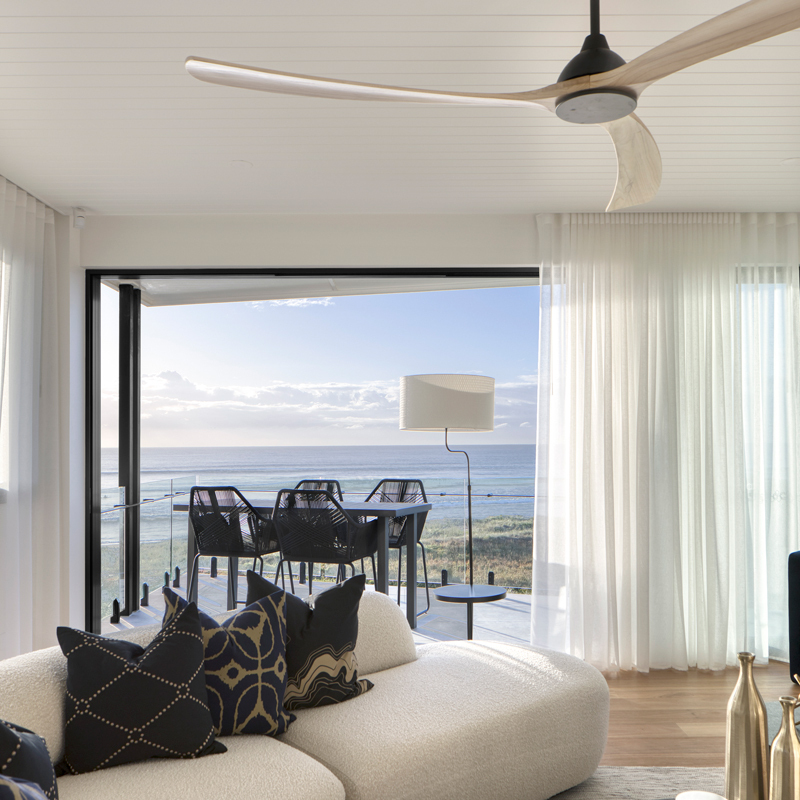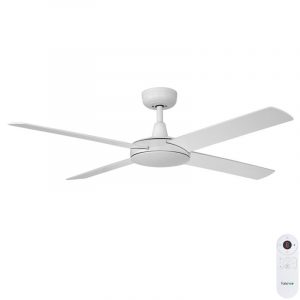How much does a ceiling fan cost to run?
How much does a ceiling fan cost to run?
With energy costs and energy efficiency front of mind for many Australians, it’s helpful to know which methods of cooling are the most effective. And the cheapest to run.
Ceiling fans are a simple, affordable option for cooling homes during our warm Aussie summers. They keep energy costs down and provide comfortable living spaces the whole family can enjoy.
But how much do fans actually cost to run? And are they energy efficient?
We provide a handy guide to calculating ceiling fan running costs and tips for getting the most out of your fan.
How much do ceiling fans cost to run?
The short answer is: It depends.
Several factors affect ceiling fan running costs, including fan type, size, and speed.
Ceiling Fan Type
There are a wide variety of ceiling fans available to suit Australian conditions, powered by either an AC or DC motor. And different ceiling fan models use different amounts of power. Their usage is measured in watts.
It’s important to choose the right fan for your situation.
TIP: The most energy efficient fan (and cheapest to run) is usually a ceiling fan with a DC motor.
Ceiling Fan Size
Typically, the larger the room, the larger the fan (or number of fans) needed to cool the space. Larger ceiling fans require larger motors and, therefore, cost more to run.
TIP: You should position your fan where you spend most time in the room, for example, over your seating, bed or work area. The secret to a fan’s success is creating cooling breezes which pass gently over your skin while you work, relax or go about your day.
Ceiling Fan Speed
If you run your fan on a lower speed, you can save dollars. The faster the speed, the more energy the fan uses, and the more it costs to run. Important note: Even on high speeds, fans use very little energy. And are much cheaper to run than their energy-hungry cousin, the split system air-conditioner.
How many watts does a ceiling fan use?
Typical AC ceiling fans use 50-60 watts on high speed, while the average DC ceiling fan uses between 25—30 watts on high speed, and a super-efficient 2-3 watts on low speed. Generally speaking, the larger the fan (and its motor), the higher the wattage, and DC fans use less watts than AC fans.
So, now you’ve checked the wattage, how do you calculate the running costs for your ceiling fan?
Handy guide to calculating ceiling fan running costs
Before you calculate the cost of running your ceiling fan, you’ll need to check the relevant tariff on your energy bill. The time of day, that is, peak versus off-peak rates will influence the overall costs.
Ceiling fan running costs calculator
We’ve chosen a popular energy efficient model (with a DC motor) to demonstrate how to calculate typical running costs.
Fan Wattage: 35 watts (Low speed 3.5 watts, High speed 19.4 watts)
Sample energy tariff: 28c / kWh
Simple running cost formula
Step 1 > Convert fan wattage to kWh
Divide your fan’s watts by 1000
Example: 3.5 watts ÷ 1000 = .0035 kWh per hour
Step 2 > Follow this simple formula:
Fan’s kWh x energy tariff
Example: .0035 kWh x 28c per kWh = .098 cents per hour
Handy tips: how to cool and save
- Smart thinking: ceiling fans and ventilation
- The power couple: ceiling fans and air-conditioning
To save on the hottest days, use your ceiling fan on a low setting to boost your air-conditioning. The ceiling fan circulates the cooling air throughout the space and allows you to set your air-conditioning on a warmer setting, while maintaining family comfort.
Ceiling fans cost a fraction to run compared with air-conditioning. According to energy.gov.au, for every degree higher you set your air-conditioning, you save 10% on running costs. That’s a powerful saving!
Ready to save on your cooling bills? Choose the perfect fan for your situation.
Contact us for more information.



